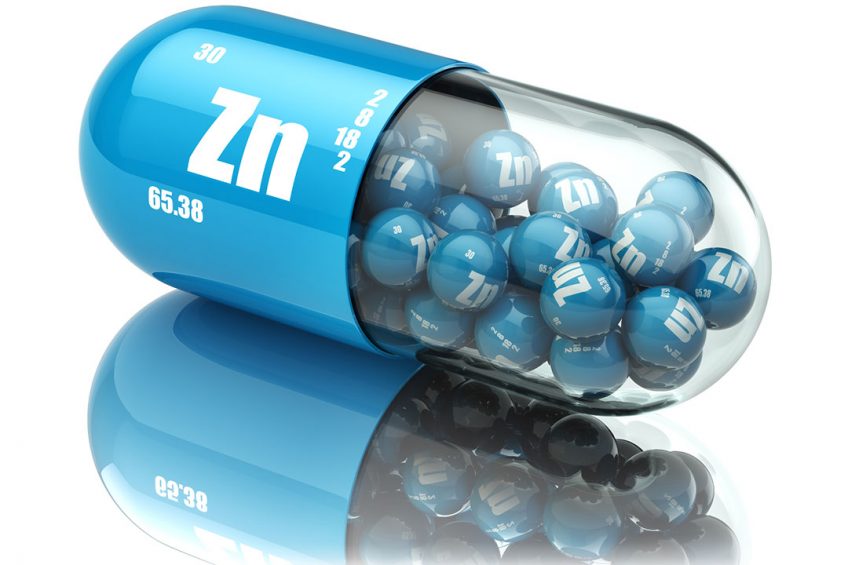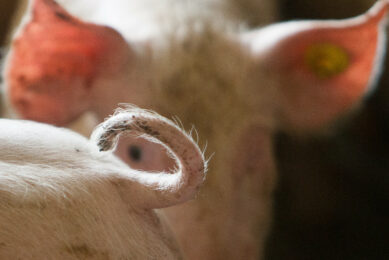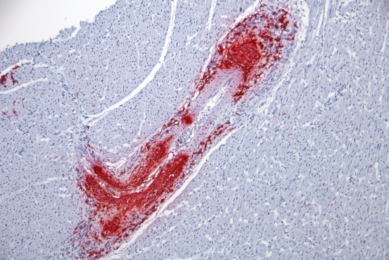Benefits of ZnO nanoparticles in piglet diets

Low doses of ZnO nanoparticles (nano-ZnO) may be a feasible substitute for high doses of conventional zinc oxide in weaned piglets, contributing to a reduction in environmental damage. Here, the efficacy of nano-ZnO and conventional ZnO in piglet diets are compared.
Zinc, as a component of many metalloenzymes and digestive enzymes, is an essential trace element for animals. Zinc oxide (ZnO) improves growth performance and inhibits intestinal inflammation in weaned piglets. However, due to its low digestibility, high doses of ZnO greatly increase zinc excretion and cause environmental pollution. In the last decades, nanotechnology has been developing fast and provides a new dimension for the exploration of substitutes for dietary conventional concentrations of ZnO in weaned piglets. Owing to the decreased particle size, increased surface area, high chemical stability, and enhanced reactivity, zinc oxide nanoparticles possess a lot potential.
Early weaning remains a critical phase in pig production, and is associated with considerable challenges, such as digestive disorders, reduced growth, increased diarrhoea, and higher morbidity and mortality, which cause major economic losses to the pig industry. Zinc oxide (usually at 2,500 ppm zinc) is usually recommended for inclusion during the first two weeks over the weaning period in pigs. It is crucial for the prevention of post-weaning diarrhoea (even mortality) and occasionally oedema disease, both associated with infections with Escherichia coli. The prevention of disease in piglets does dramatically improve growth and feed conversion efficiency. Due to its low absorption, around 80% of the ZnO is excreted in the faeces causing a remarkable deterioration in the environment. Therefore, concerns related to environmental pollution and adverse effects on environmental microbial diversity caused by faecal zinc excretion have increased.
What are zinc nanoparticles?
On the other hand, where therapeutic zinc oxide is not approved for use, antibiotics are commonly being used to control E. coli infections post-weaning. However, these antibiotics are being banned for their effects on antimicrobial resistance. Can nano-ZnO be a better substitute for zinc oxide in piglet diets? ZnO nanoparticles normally used in the chemical and pharmaceutical industries, are those particles smaller than 100 nanometers (nm). Compared to conventional ZnO used in pharmacological doses in weaning pig diets, the nanoparticulate ZnO have a smaller particle size, a larger number of particles per unit mass, a higher specific surface area and are more reactive in chemical and biological systems.
Physico-chemical properties of ZnO products used in animal nutrition show strong differences, which explain variable bioavailability values and antibacterial strength in animals. In ZnO nanoparticles, physico-chemical properties are modified: specific particle size (10 to 15 times higher than conventional sources) and shape, increases the surface of contact with
bacteria. In addition, the high porosity of the powder amplifies the antibacterial activity of the zinc oxide nanoparticles. Low doses of nano-ZnO may be a feasible substitute for high doses of conventional ZnO in weaned piglets, contributing to reduction in environmental damage.
Nutrient utilisation and performance
Differing research works have shown the efficacy of nano- ZnO in piglet diets compared to conventional ZnO. As shown in Table 1, the study of Pei et al. (2019) evaluates the effects of dietary zinc oxide nanoparticles (nano-ZnOs) on growth performance and incidences of diarrhoea in weaned piglets. Compared to the control, dietary supplements of nano-ZnO and ZnO improves the average daily weight gain (ADG), average daily feed intake (ADFI), gain:feed ratio (G:F) and villus height to crypt depth ratio in the duodenum and jejunum and decrease diarrhoea incidence.
Compared to each other, nano-ZnO (at 300 and 450 mg/kg) shows better growth performance compared to the conventional ZnO (3000 mg/kg). In the study of Milani et al. (2017) the results showed that the ZnO nanoparticles at 60 mg/kg is not high enough to trigger a significantly better growth performance compared to ZnO at 3,000 mg/kg. However, the digestibility of nutrients (protein and energy), although not statistically significant, are numerically improved at levels as low as 15 mg/kg Nano-ZnO (Table 2).
The effects of nano-ZnO on intestinal morphology of weaning pigs are shown in Figure 1. Pathological damage to villi in the duodenum, jejunum, and ileum (results not shown) was alleviated by 450 mg/kg nano-ZnO and 3,000 mg/kg ZnO. Supplementation of both 450 mg/kg nano-ZnO and 3,000 mg/kg ZnOs increased the villus height of duodenum, jejunum, and ileum. An enhancement of the villi (V) to crypt (C) ratio of duodenum and jejunum was observed in nano-ZnO (450 mg/kg) compared to ZnO (3,000 mg/kg). The results indicate that Zinc nanoparticles can stimulate mucosal growth and enhance epithelial cell regeneration resulting in a better developed intestinal tract. Hence, nano-ZnO may improve the surface area for absorption and utilisation of nutrients to enhance growth performance.
Figure 1 – Villus height, crypt depth, and villus height/crypt depth (V/C) in duodenum and jejunum in weaned pigs.
Effect on microflora population
The effects of nano-ZnO (450 mg/kg) on microbial content of the large intestine in weaned piglets showed significant decrease in the population of E. coli, in the contents of caecum, rectum, and colon. The decreases compared to ZnO (3,000 mg/kg) were more pronounced in the colon. But the differences in abundance of Salmonella, Lactobacillus, and Bacillus bifidus were not significant compared to the diets without supplements of zinc. The serum immunity indices showed that supplementing nano-ZnO (450 mg/kg) in piglet diets increases the blood concentrations of immunoglobulin A and cytokines IL-6 and TNF-α compared to ZnO 3,000 mg/kg; these results implied that nano-ZnO may exhibit an anti-inflammatory capacity by changing the serum concentration in antibodies. In a similar study, Li et al. (2016) also reported that nano-sized ZnO can increase serum IgG and enhance the immune response of weaning piglets.
It is suggested that before testing engineered nano-ZnO particles in animal diets, certain challenges will need to be addressed: product characterisation with appropriate analytical methods, industrial scaling from laboratory samples, ADME (Absorption, Distribution, Metabolism, Excretion) and toxicity levels to animals, safety for workers and for the environment, and compliance with local regulations.
In conclusion, appropriate concentrations of nano-ZnO, especially 450 mg/kg, improves weight gain, feed intake and ratio gain:feed better than the conventional 3,000 mg/kg ZnO.
Nano-ZnO as low as 60 mg/kg could also improve the digestibility of nutrients, although not to a statistically significant level. Nano-ZnO improves zinc absorption and reduces faecal zinc excretion compared to doses of conventional ZnO; there was reduced zinc excretion in faeces and urine of piglets supplemented with 450 mg/kg nano-ZnOs compared to 3,000 mg/kg ZnO (55.41% and 46.24%, respectively). Compared to conventional ZnO, low concentration dosage of nano-ZnO (450 mg/kg) can better alleviate diarrhoea, improve intestinal morphology, and reduce the abundance of E. coli in piglets.
References available on request







